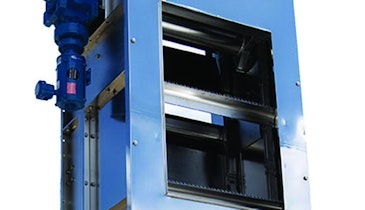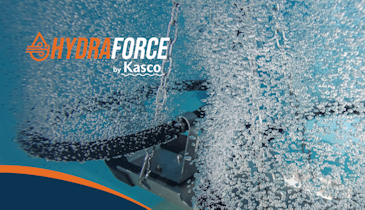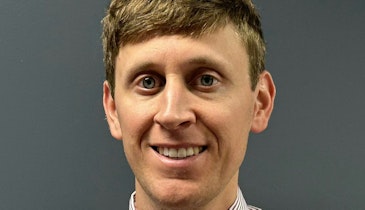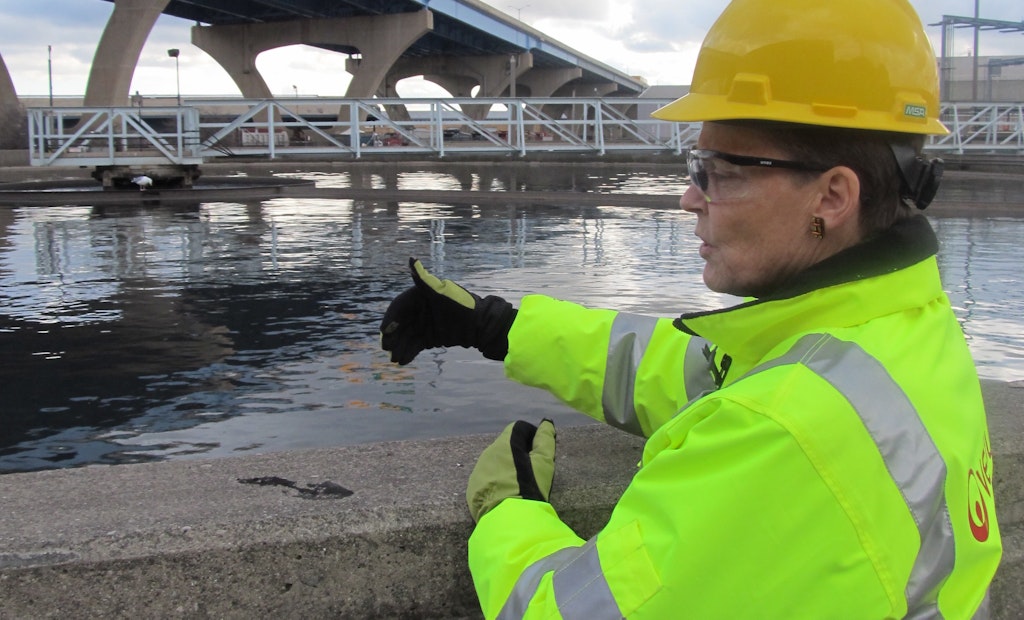
Interested in Treatment?
Get Treatment articles, news and videos right in your inbox! Sign up now.
Treatment + Get AlertsI always dreamed of visiting Jones Island. It has actually been on my bucket list for decades.
I wish I could say Jones Island is a tropical island in the Dutch West Indies. Instead, it’s a largely concrete campus (and original ship-building site) that’s home to the Jones Island Water Reclamation Facility just off the shore of Lake Michigan in Milwaukee. It may not be a beachfront getaway, but at least it has a view of the water.
A few weeks ago, I crossed Jones Island off my bucket list as I toured the 91-year-old facility, a partnership between Veolia North America and the Milwaukee Metropolitan Sewerage District (MMSD). Why was touring a wastewater treatment plant on my bucket list? As a native Milwaukeean, I had driven across the Hoan Bridge on the city’s south side for decades, always wondering about the concrete ghost town down below. It seemed dark, mysterious and somewhat dangerous.
Fortunately, I discovered the facility to be none of the above. In fact, for me as a freelance writer now deeply entrenched (bad pun) in the wastewater industry, it was eye opening and informative — nothing like the pseudo-secretive neighborhood I imagined it to be.
I imagine my perceptions — even as a local — were not dissimilar to others who may wonder about any wastewater treatment plant. Sure, the general public may know the basics. But much of the nuts and bolts are likely shrouded in mystery or blind disinterest.
That’s something many wastewater treatment plants, including Jones Island, are looking to remedy, mainly through good public relations programs and enhanced tours. And the interest is definitely there. Milwaukee learned that a few years ago when more than 2,100 visitors toured the facility (which serves 1.1 million people in 28 municipalities in southeastern Wisconsin) in a single day.
For the past seven years, more than 20,000 visitors from more than 22 countries have visited Jones Island, which is capable of treating more than 300 million gpd of wastewater.
Joyce Harms, communications and community relations manager for Veolia Water Milwaukee, which operates the plant, says she’s seen a stratospheric increase in tours over the past few years. That’s something she has worked hard to achieve. “There are different layers of what people are aware of,” she says. “What we try to do, very intentionally, is to learn what it is they want to get out of [the tour]. I try very hard to broaden their view of what wastewater is.”
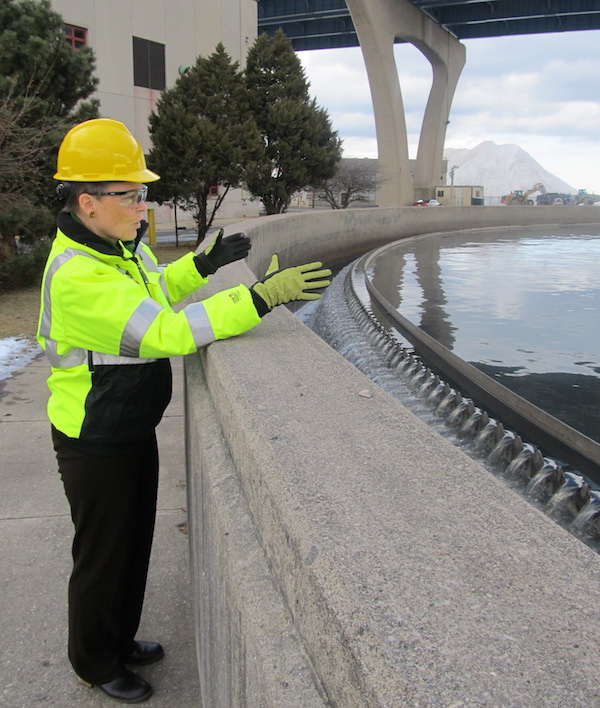
Joyce Harms takes me on a tour of the outside facilities at Jones Island.
While the public most certainly doesn’t know what effluent is, or where it goes, they may also not realize just how clean water can become after undergoing the multiple processes at a treatment plant.
Environmental impact
I, like many, was surprised to learn that the role of a wastewater treatment plant doesn’t just end with the effluent. Of course, I knew how important water was a natural resource, but I was impressed with the treatment plant’s dedication to the environment. I didn’t know that — in addition to environmental stewardship through fiscal responsibility and reducing greenhouse emissions — Jones Island is also part of the Peregrine Falcon Recovery Program. It even has a nest with a live webcam housed on the top of its Milorganite building.
In fact, birds are so important to Jones Island that Harms, who used to work for the National Park Service, uses the local birds as “indicators,” pointing out their habits to tour-goers.
“What we’re doing here really mirrors what happens in nature,” she says, noting the seagulls hovering near the unclean, untreated water and pointing to the Mallard ducks swimming in the treated water near the end of the process.
The plant’s environmental impact has also been noteworthy in the industry, in that it’s one of very few wastewater plants to recycle its solid wastes into fertilizer — the Milwaukee Organic Nitrogen known as Miloganite. That dates back to 1926.
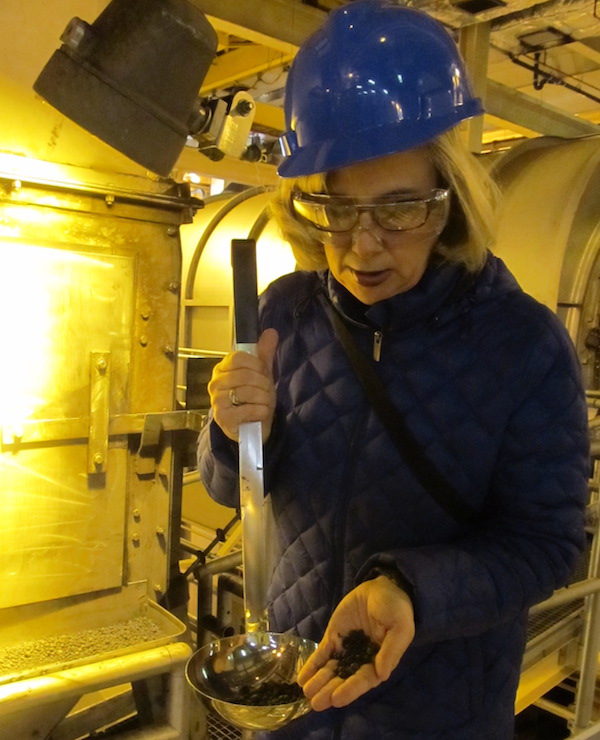
Here, I am examining Milorganite right out of the dryer at the Milorganite plant.
Global Water Center
My eye-opening tour of water-centric Milwaukee continued at the nearby Global Water Center, a 96,000-square-foot building home to The Water Council, water-related companies like Badger Meter and AO Smith, a Brew start-up accelerator, and labs for the UW-Milwaukee School of Freshwater Sciences.
My tour guide, Meghan Jensen, director of marketing and membership for the Global Water Center, notes that one of their missions is to educate the public on “how to get people to be more conscious of water.”
The contemporary and open space may be large, but it has filled to capacity within just two years of occupancy and is looking forward to building the Global Water Center II in an adjacent building, bringing talent, companies and facilities closer together.
A nearby empty former rail yard will one day house a Water Technology Park. “We needed a space where we could bring everyone together. It’s all about finding the right tenants,” says Jensen. “It’s all about building an ecosystem.”
John Tillotson, CEO of Microbe Detectives, calls the Global Water Center “like Disneyworld, but for water geeks.”
I may not yet be a true water geek, but I agree with that assessment. These tours definitely brought me closer to understanding the inner workings of a major city’s waterworks. They’ve given me a closer understanding of what’s happening if I leave my sink running while I brush my teeth, and they’ve made me more conscious about what I should and shouldn’t flush down the toilet.
I’m proud to say I’m a native Milwaukeean, and although I grew up thinking of it as a city of beer, brats and cheese, I now have a deeper understanding of what happens when it comes to water. Water cluster cities everywhere are taking the lead in educating the public, like me, on just how important their work really is.


